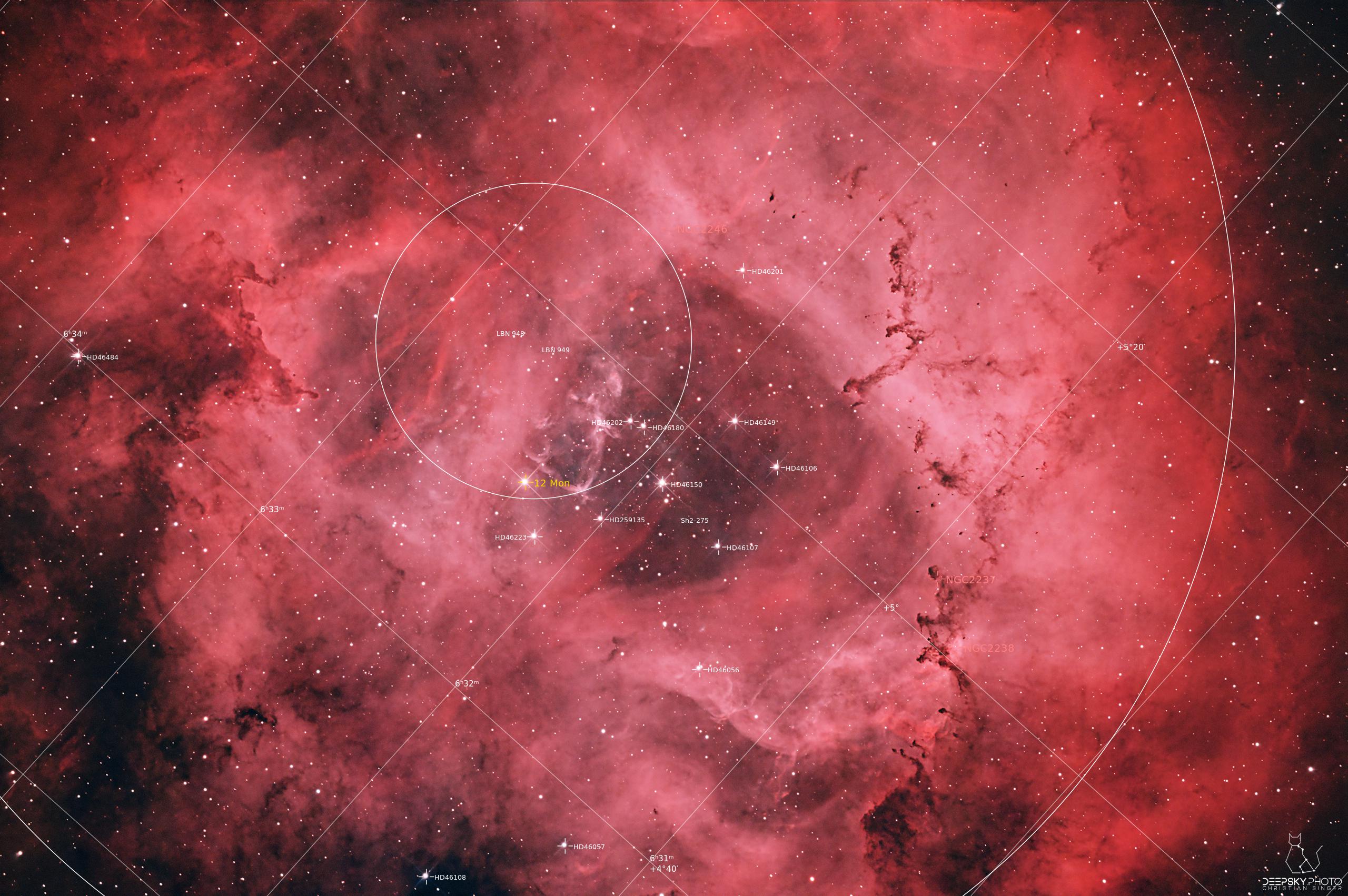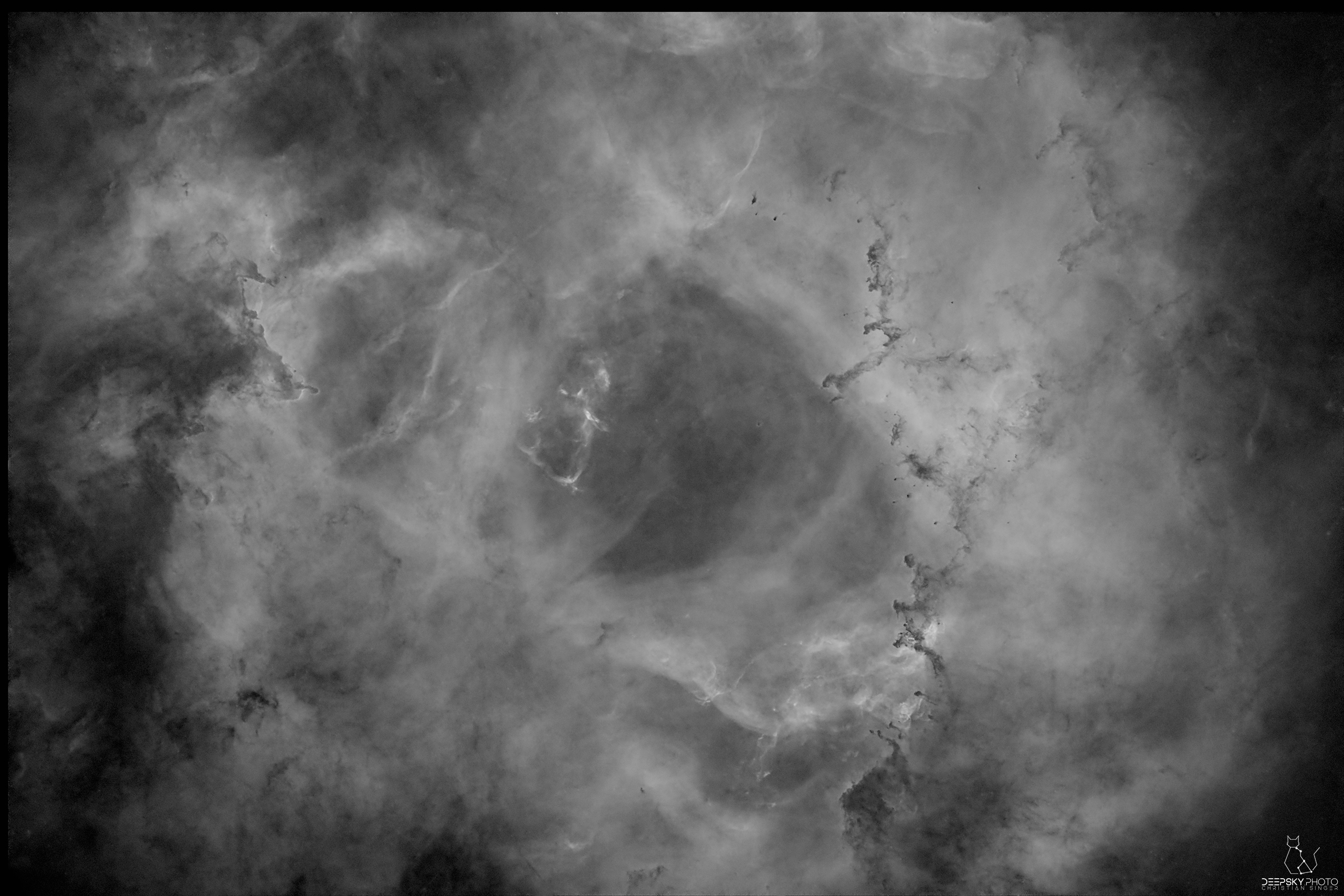Emission Nebula in constellation “Monoceros”
Project #3
NGC2239 – Object Description
The Rosette Nebula (also known as Caldwell 49) is a H II region located near one end of a giant molecular cloud in the Monoceros region of the Milky Way Galaxy. The open cluster NGC 2244 (Caldwell 50) is closely associated with the nebulosity, the stars of the cluster having been formed from the nebula’s matter. We have a distance of roughly 5.200 lightyears between Earth and this object. (Source: Wikipedia)
NGC2239 – Project Publications
Please find all project-related images for this revision below.
NGC2239 – Project Details
Please find all project-related details for this revision below.
There is a second revision for NGC2239 available.
| Astrobin Link | NGC2239 / Rosette Nebula |
| Astronomical Object | NGC2239 / Caldwell 49 |
| Distance to Earth | 5.200 light years |
| Size / Diameter | 130 light years |
| Date(s) of Photography | December 2022 |
| Exposure Details | Dual NB: 57 x 300″ (4h 45min) Total: 4h 45min |
| Calibration | FlatsA "flat frame" is shot against a bright surface and contains vignetting and all the "bad" things (e.g. dust particles) that block/disturb your light train. The combination/stack of multiple flat frames is called a "Master Flat". More: 50 BIAS: 50 Master-Dark |
| Equipment | Mount: Skywatcher EQ6-R PRO (the old w/o USB-interface) Telescope: Skywatcher 200PDS Newton (200mm/1000mm, f/5) Camera: Touptek DeepSky Pro 2600c (Gain: 100, Offset: 100) Clearglass Filter: Baader Clearglass 2″ Dual Narrowband Filter: Optolong L-eXtreme 2″ Corrector: Pál Gyulai GPU Komakorrektor Guiding(Auto-)Guiding is essential in astrophotography, as an un-guided mount/telescope will produce blurry images as the stars / the deepsky object will drift away. This is heavily dependent on the exposure time, so for long exposures you want to make sure to have a perfectly set up auto-guiding. More: ZWO ASI120MM + 50mm Helical GuideScope |
| Software | Observatory Automation: Sequence Generator Pro Guiding(Auto-)Guiding is essential in astrophotography, as an un-guided mount/telescope will produce blurry images as the stars / the deepsky object will drift away. This is heavily dependent on the exposure time, so for long exposures you want to make sure to have a perfectly set up auto-guiding. More: PHD Post-Processing: Astro Pixel Processor + PixInsight + Photoshop |




